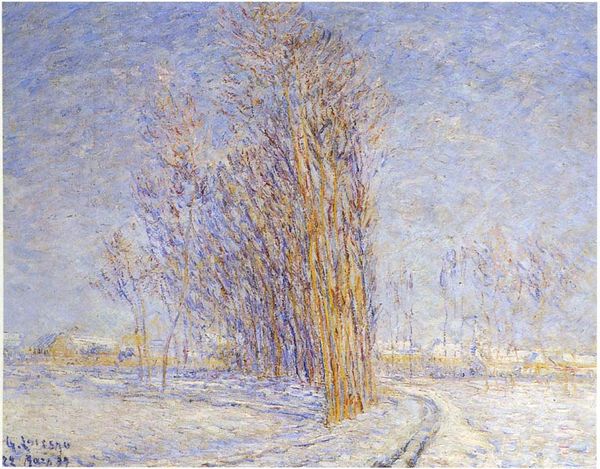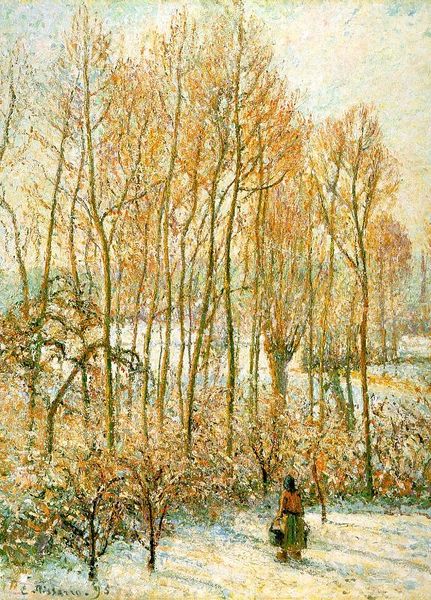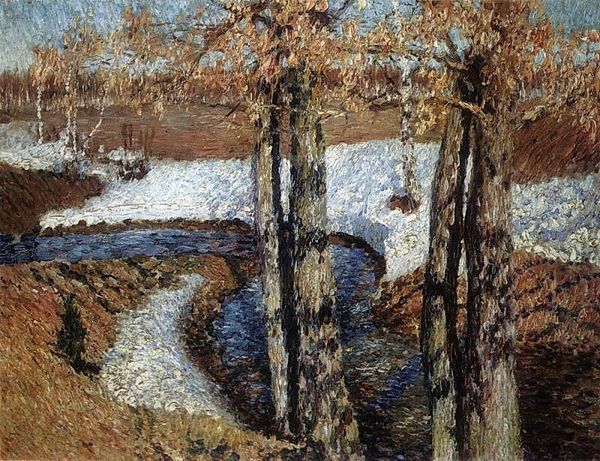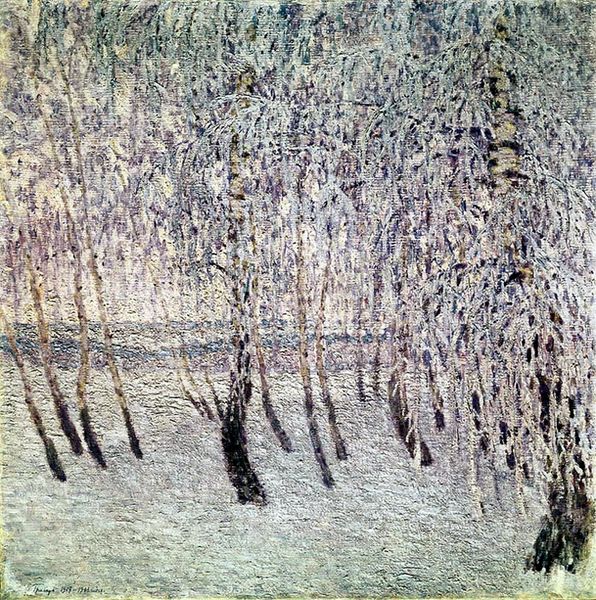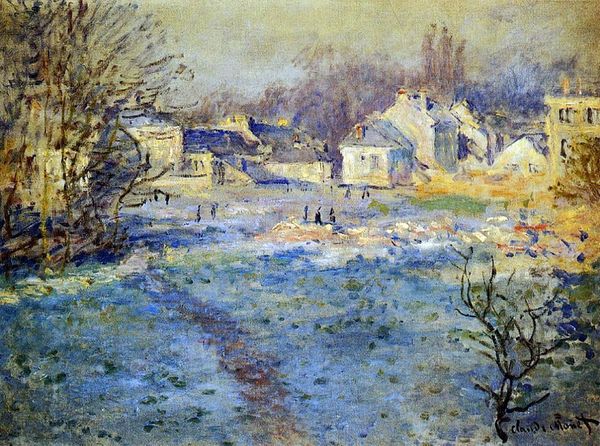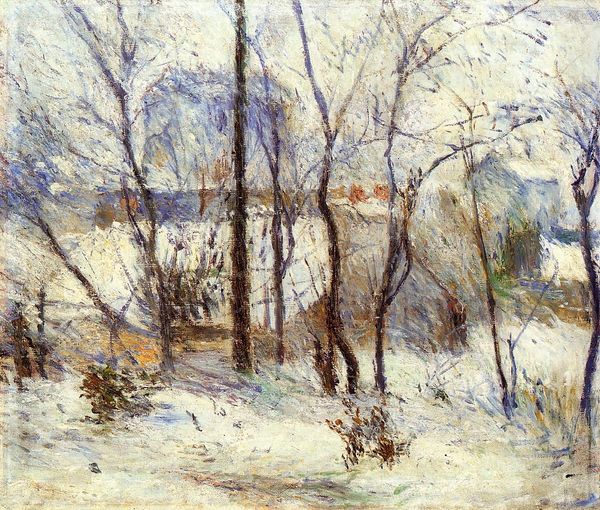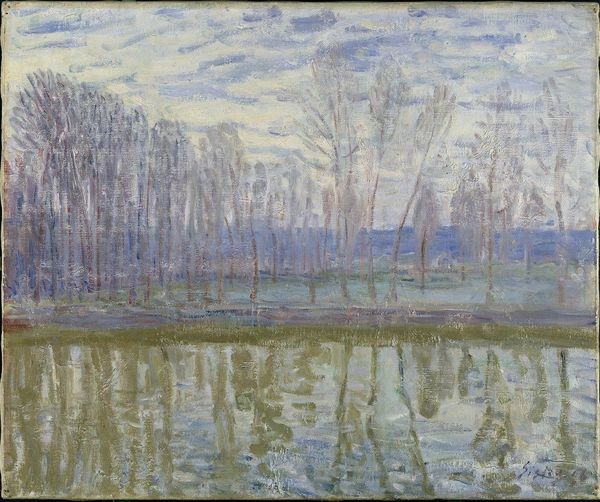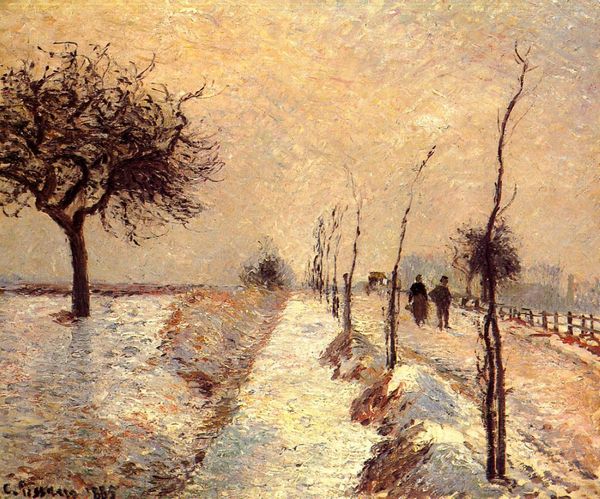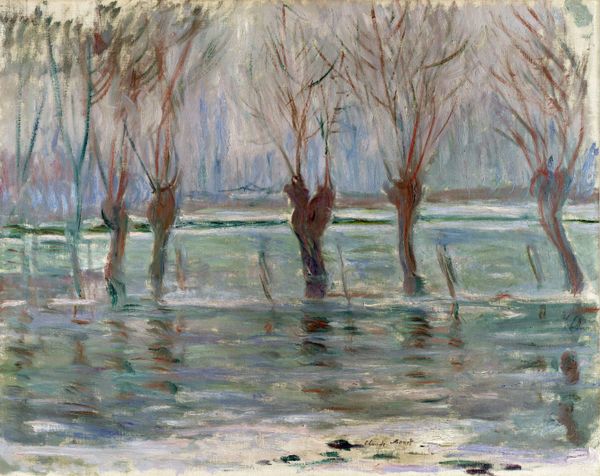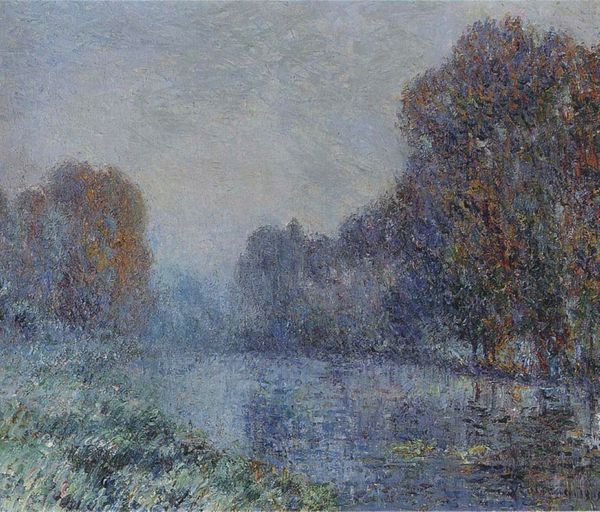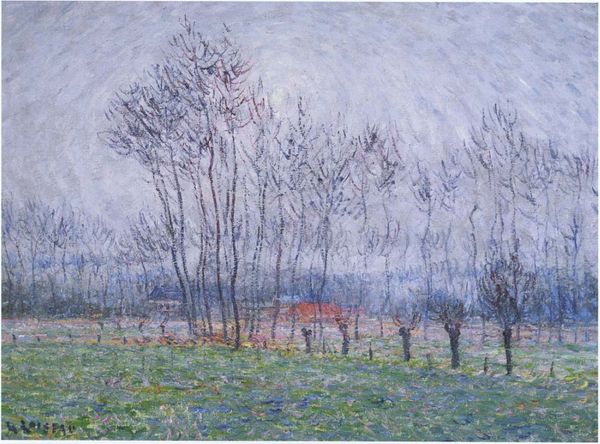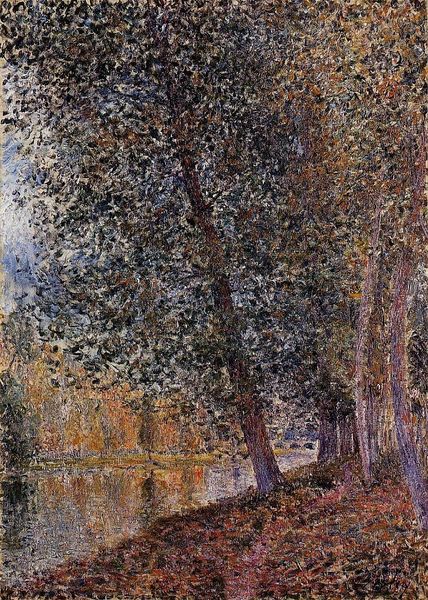
Dimensions: 48 x 60 cm
Copyright: Public domain US
Curator: Looking at Igor Grabar’s "The Frost," painted in 1918, what strikes you first? To me, it's the light, that shimmer you only get with snow... almost otherworldly. Editor: I’m immediately drawn to the texture. It's built up, impasto, particularly in the foreground. You can almost feel the labor, the sheer physicality of applying those strokes to capture the fleeting moment. What materials do we think he was using? Curator: Definitely oils, and most likely painted *en plein air*, which must have been bitterly cold work in a Russian winter, if the painting's title is anything to go by. It's this fascinating tension, isn't it? The ephemeral beauty versus the physical toil. Editor: Exactly. This wasn’t mass production; this was a real engagement with his environment. How much time do you think was dedicated to each birch tree? Consider what those gestures reveal about value... It’s a landscape, of course, but rendered with near-abstract dabs of colour. It almost feels like you’re peering through a snowstorm, rather than gazing at a pristine scene. Curator: Yes! A blizzard made visible. But you also see touches of pale lilac, the faintest blush on the snow… the kind of ephemeral colours you wouldn't necessarily expect. It suggests a world far removed from war, as an attempt to seek serenity in nature during an unstable time. Does this seem far fetched? Editor: Not at all. Materials are always rooted in larger events. This landscape’s post-Impressionist touch is striking and it is as if the canvas seeks the sublime. Did he consider the legacy of plein air production, or the future consumption of art materials under wartime circumstances? Curator: I hadn't thought of it in those terms before! What a fascinating perspective, to consider the cost and consequences, from production to reception. I’m left wondering how much of his landscape endures precisely because of the marks made of it; they offer an anchor and enduring perspective to consider time through labor and craft. Editor: Agreed, by focusing on the materiality of its creation, perhaps the viewer is invited to appreciate and consider it within our contemporary framework.
Comments
No comments
Be the first to comment and join the conversation on the ultimate creative platform.
